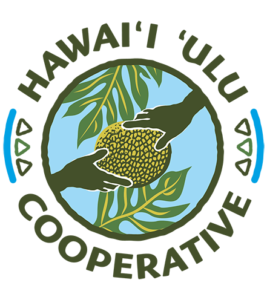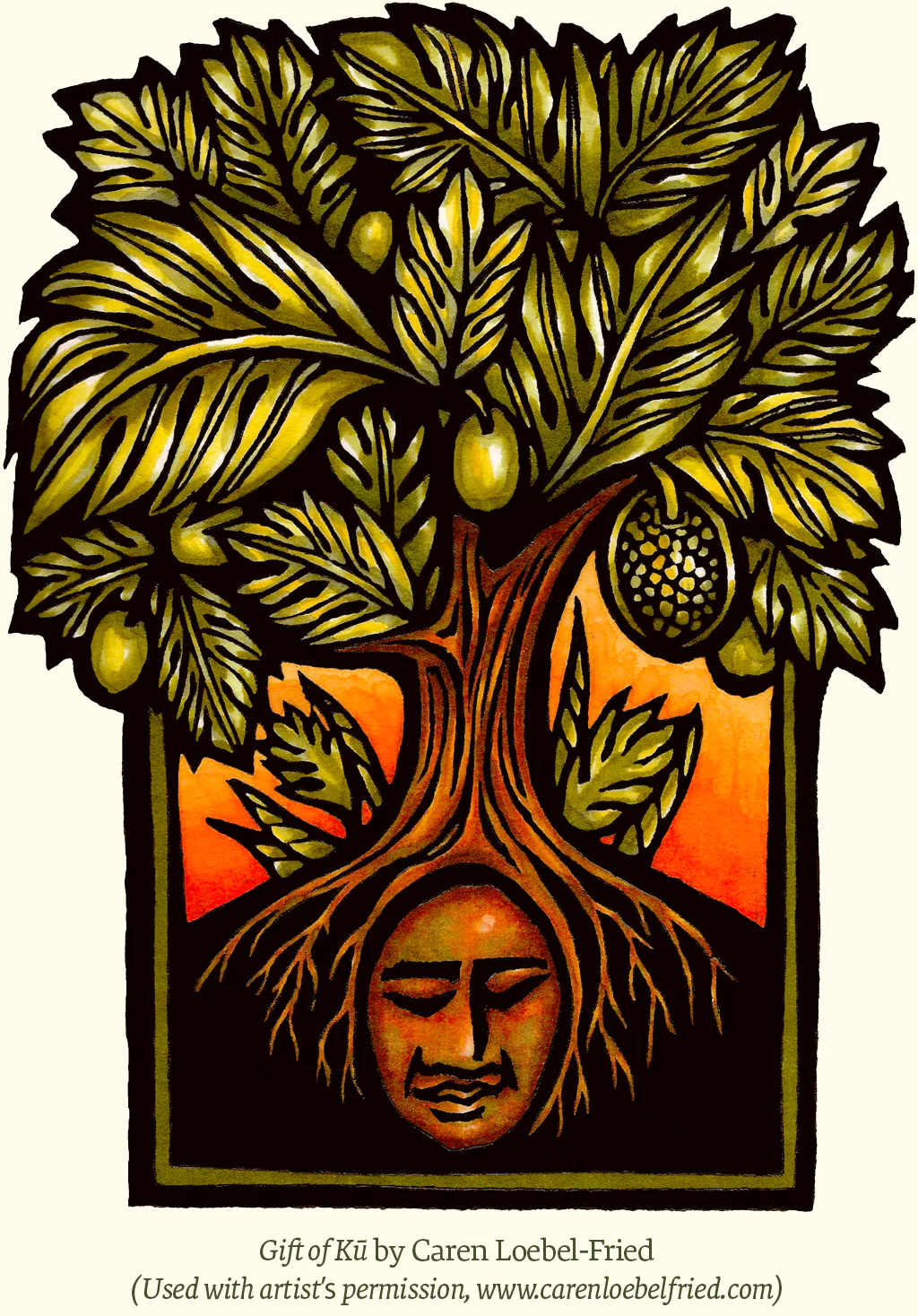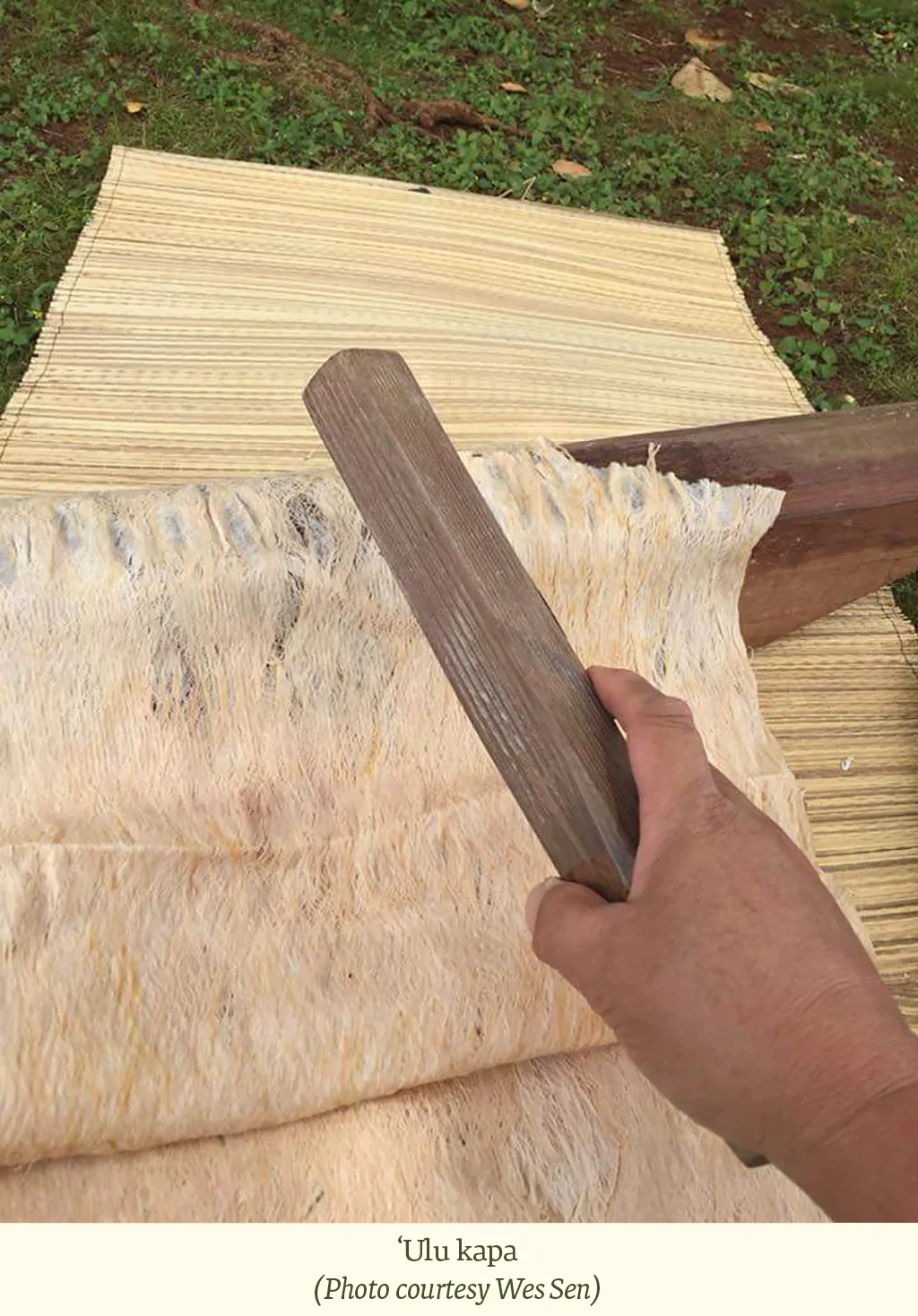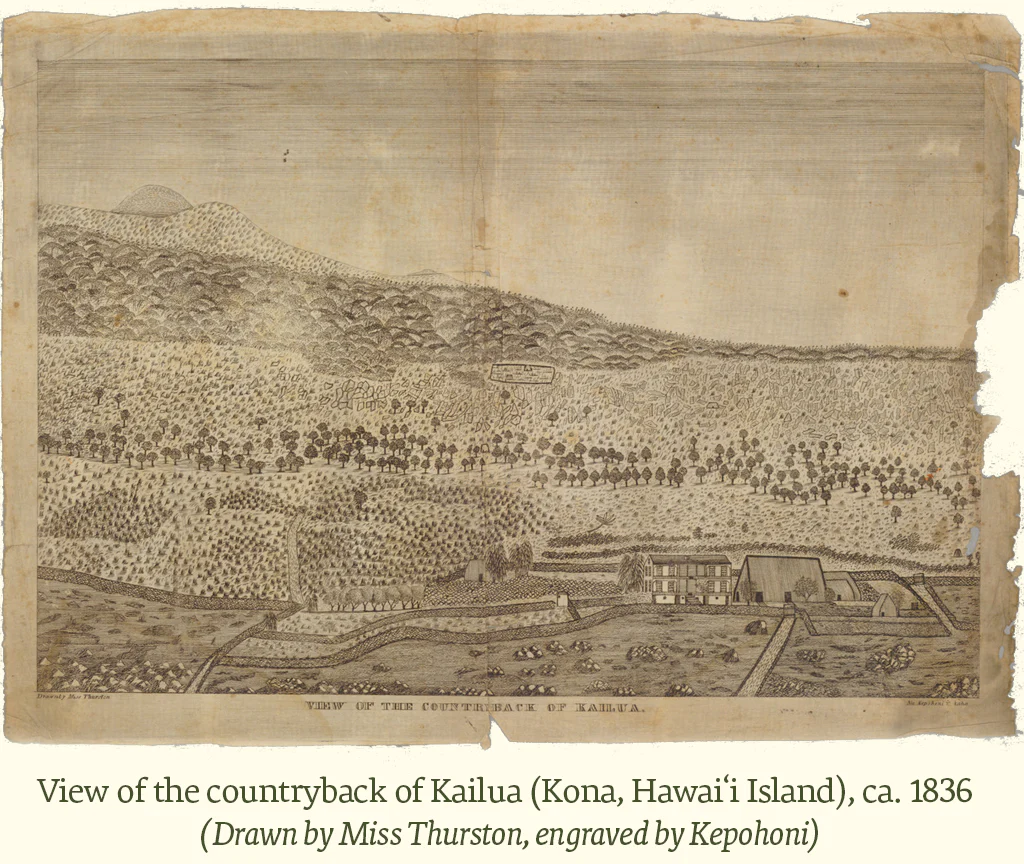‘Ulu History
‘Ulu History
‘Ulu has been a staple food crop and natural resource in Hawai‘i for many centuries. Its roots originate in the South Pacific, with Polynesian voyagers gradually transporting and establishing ‘ulu throughout Oceania. It is not known for certain if ‘ulu arrived in Hawai‘i, along with kalo (taro) and uhi (yams), during the initial wave of Polynesian migration, or if it was introduced later, like ‘uala (sweet potatoes) and ipu (gourds), after human populations in Hawai‘i were more established.
One mo‘olelo (historical account) suggests that ‘ulu arrived in Hawai‘i in the 12th century when a brave navigator named Kaha‘i-a-Ho‘okamali‘i brought the first ‘ulu tree from Samoa or Tahiti and planted it near Kualoa, O‘ahu. Other mo‘olelo suggest ‘ulu was originally planted at several sites throughout the Hawaiian Islands, including Kohala on Hawai‘i Island and the ‘Ewa and Ko‘olaupoko regions of O‘ahu. Numerous mythical accounts connect the origins of ‘ulu in Hawai‘i with various akua (deities). One suggests fishermen from Pu‘uloa (‘Ewa, O‘ahu) were blown off course to lands in the realms of Kāne and Kanaloa that were abundant with food, from which they brought ‘ulu back home; the goddess Haumea then scattered and proliferated the ‘ulu across the islands. Another tells the legend of Kū, the Hawaiian god of farming and fishing, transforming himself into an ‘ulu tree in order to feed his family during a period of extreme drought and famine. Grateful for Kū’s sacrifice, generations of Hawaiians have regarded ‘ulu as a symbol of resilience, perseverance, and security, often revering ‘ulu trees as kinolau (embodiments) of Kū. An ‘ulu tree is still often planted when a child is born to ensure a lifetime of nourishment.
Traditionally, ‘ulu trees provided Hawaiians with more than just food: virtually all parts of the tree had practical uses. Trunks and limbs provided wood for houses, canoes, surfboards, firewood, drums, and other musical instruments; the inner bark was beaten into cloth and made into rope; sap was used for waterproofing, caulking, and glue for cloth and catching birds; leaves served as sandpaper and serving platters, and flowers used in lei-making. Ripe fruit and leaves were also used as animal feed and even fish bait. Virtually all parts of the tree have medicinal applications, as well. A few examples include sap used to treat broken bones, sprains, sciatica, and diarrhea; liquid extracted from crushed stems to alleviate eye pain and ear infections; and shoots and young leaves used to relieve headaches.
Hawaiians often cultivated ‘ulu in a range of environments and systems of agriculture. Trees were commonly grown near households, clustered along sheltered valley walls, and speckled within more intensive agricultural developments. Most strikingly, diverse and meticulously tended agroforests could be found across the islands, such as the kalu‘ulu, a long and narrow geographic zone running north to south in the Kona region of Hawai‘i Island approximately 500 to 1,000 feet above sea level, and in other similar belts in West Maui and East Lāna‘i. ‘Ulu provided an open canopy, among and under which Hawaiians grew ‘ōhi‘a ‘ai (mountain apple), kukui (candlenut), ‘uala, wauke (paper mulberry, used for making high-quality kapa cloth), uhi, mai‘a (bananas), ‘olena (turmeric), kalo, ‘awa (kava kava), and pia (Polynesian arrowroot). These agroforestry zones were decidedly different than found elsewhere in the Pacific, where trees were largely unmanaged and occured in dense, closed canopy forests. In Hawai‘i, trees were well-spaced and pruned to maintain a short, open-canopy system that allowed for much more diverse cultivation.
Today, the Hawai‘i ‘Ulu Cooperative is on a mission to bring ‘ulu back as not only a sustainable, nutritious, and accessible food source, but as a means to improve local food security, contribute to Hawai‘i’s agricultural economy, and to mitigate the effects of climate change—given the trees’ low maintenance requirements, heat and drought tolerance, and long lifespan. Many of our member producers are incorporating ‘ulu into diversified agricultural systems, carrying forward the traditions and wisdom of the mahi ‘ai (farmers) that preceded them. By honoring our past, we seek to contribute to an abundant, resilient future for Hawai‘i Nei.



